
By the outbreak of World War 1 a new dimension had been added to the traditional weaponry. It was in the air; typified by two schools of thought; one was the aeroplane, flimsy in construction and as yet unreliable. The other was the airship; slightly more reliable and possessing advantages over the airplane in range and payload. Since 1900 Count von Zeppelin had pursued an unwavering path in the development of his own design of airship. This had been a journey highlighted by accidents and other misfortunes and such setbacks would have dismayed many of those pioneer airmen, but the determined von Zeppelin eventually gained acceptance by both the German Army and Navy.
The German army went to war in the belief that the Zeppelin would provide an entirely new form of reconnaissance in co-operation with their ground forces. These army airships were well equipped with cameras and even photographic darkrooms to provide instant records of their missions. Theirs was an elite force, seemingly invulnerable but within weeks such hopes were shattered. On early missions over Russian territory, they were subjected to concentrated ground fire and with their enormous bulk they were easy prey to even the poorest marksman. Of the six zeppelins involved on the Eastern Front four were lost to ground fire, and as a result a costly lesson had been learned.
Conditions on the Western Front were of a more sophisticated style, with their ships housed in purpose-built sheds However in October 1914 their weaknesses were exposed when LZ25 was destroyed in a surprise bombing attack by Royal Naval Air Service aircraft. The original theory for the zeppelin was found to be seriously flawed and a more positive role needed to be found for them. Great Britain had always found security in the English Channel; now it appeared the sea was no impediment to a marauding zeppelin, and thus the concept of strategic bombing was launched.
Diese Geschichte stammt aus der March 2020-Ausgabe von Global Aviator.
Starten Sie Ihre 7-tägige kostenlose Testversion von Magzter GOLD, um auf Tausende kuratierte Premium-Storys sowie über 8.000 Zeitschriften und Zeitungen zuzugreifen.
Bereits Abonnent ? Anmelden
Diese Geschichte stammt aus der March 2020-Ausgabe von Global Aviator.
Starten Sie Ihre 7-tägige kostenlose Testversion von Magzter GOLD, um auf Tausende kuratierte Premium-Storys sowie über 8.000 Zeitschriften und Zeitungen zuzugreifen.
Bereits Abonnent? Anmelden

Edelweiss, The Sound of Music, Grossglockner And Snow, Lots And Lots Of Snow
Austria is a wonderland of mountains, green pastures, lakes and . . . mountains
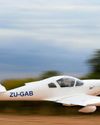
Zimbabwe Air Rally 2021 Part two
The following day we were up early to watch the departure air show once again, it is a large amount of razzle-dazzle to be honest.

Boeing 727 One Crash Per 2 30 6300 Flying Hours
The Boeing 727 is a narrow-body airliner. The first 727-100 rolled out 27 November, 1962, first flew on 9 February, 1963, and entered service with Eastern on 1 February, 1964.

Taking Flight On Another World
The Mars Helicopter, Ingenuity, is a technology demonstration model to test powered, controlled flight on another world for the first time. It hitched a ride to Mars on the Perseverance rover. Once the rover reached a suitable "airfield" location, it released Ingenuity to the surface so it could perform a series of test flights over a 30-Martian-day experimental window.
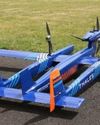
Thales Completes Successful First Flight Of New UAS With Range Capabilities Of Over 100 Km
• With a hybrid propulsion system for optimum safety, endurance and discretion, Thales's UAS 100 long-range unmanned air system for civil, government and military users will be able to operate at ranges of more than 100 km. • UAS 100 combines world-class flight safety performance with the compact design required for unmanned air systems, and complies with future European regulations for drone flights over populated areas. • The system will meet the requirements of a broad range of missions, including infrastructure inspection, coastal surveillance, border surveillance, event security, search-and-rescue and military operations.
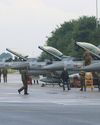
Dutch Squadron Finalises F-16 Operations
The Royal Netherlands Air Force 322 squadron based at Leeuwarden air force base terminated its operations on the F-16 “Fighting Falcon” early July (2021). With the gradual ongoing new deliveries of its successor, the Lockheed Boeing F-35A “Lightning II”, it was time for the squadron to focus only on the embedding of the new jet in the unit.
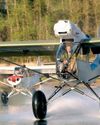
Double Ended Project: Where Is It Now
Traditionally, bush and STOL aircraft have been little more than modified certified trainers, with engine and prop upgrades, or the addition of fatter tyres. However there have been attempts to improve the safety aspect of this type of flying.
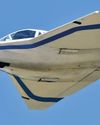
Dyke Delta Lookalike Fighter Kit Plane
The Dyke JD-2 Delta is an American homebuilt aircraft designed in the United States in the 1960s and marketed for amateur construction. It is a monoplane with retractable tricycle undercarriage and seating for four.
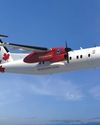
Pratt & Whitney Canada Advances Sustainable Hybrid-Electric Propulsion Technology, Contributing to Canada's Green Recovery Plan
Pratt & Whitney Canada (P&WC), plans to advance its hybridelectric propulsion technology and flight demonstrator programme as part of a $163M CAD investment, supported by the governments of Canada and Quebec.

Airbus showcases the A350-1000 for the first time in Russia at the MAKS 2021 International Aerospace Show
Airbus demonstrated its latest technological innovations and projects implemented in Russia at the International Aerospace Show which took place in Zhukovsky from 20 to 25 July.